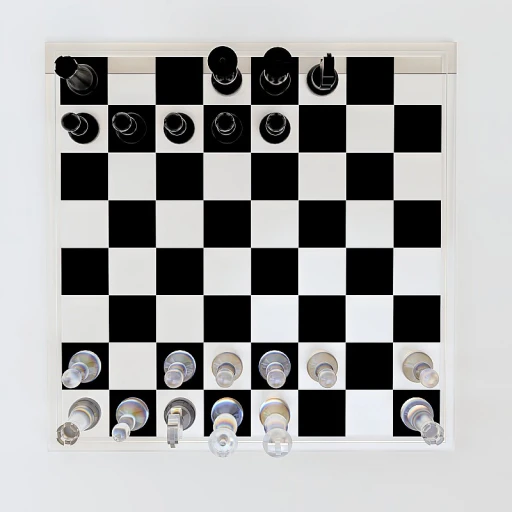Understanding HDMI 2.1 and DisplayPort 1.4
Decoding HDMI 2.1 and DisplayPort 1.4 Features
When diving into the intricacies of HDMI 2.1 and DisplayPort 1.4, it's essential to comprehend the foundational elements that set these technologies apart.
From a technical standpoint, HDMI 2.1 offers a bandwidth of up to 48 Gbps. This allows support for resolutions as high as 10K, ensuring an ultra high definition experience. With features like Dynamic HDR and higher refresh rates, HDMI is tailored for immersive visuals and smooth video playback.
DisplayPort 1.4, on the other hand, efficiently supports up to 32.4 Gbps, making it a robust contender in the world of high-performance displays. It maximizes resolutions refresh by utilizing DSC (Display Stream Compression), which allows it to achieve 8K at 60Hz or 4K at a full 120Hz while maintaining vibrant color depth.
Both standards excel in supporting audio, with past iterations integrating audio tracks seamlessly alongside video transmission. However, HDMI 2.1 is slightly ahead in the game with enhanced eARC (Enhanced Audio Return Channel) capabilities.
For those particularly interested in gaming or need a dynamic work tech setup, the refresh rate trajectory is crucial. HDMI 2.1 offers variable refresh rates, significantly enhancing your gaming experience by minimizing latency and screen tearing.
Ultimately, these two interfaces provide powerhouse features for modern work tech solutions. Whether you're balancing high resolution displays or seeking extensive high-definition support, understanding the nuances between these technologies will guide your decision-making process. For those exploring further actionable insights, including the effective reselling of tech solutions, refer to the guide on how to
successfully resell password managers.
Maximizing Display Performance
When it comes to maximizing your display performance, understanding how HDMI 2.1 and DisplayPort 1.4 handle high-resolution displays is crucial. HDMI 2.1 boasts a significant advantage in bandwidth, offering up to 48 Gbps. This increased bandwidth supports higher resolutions and refresh rates, leading to sharper, more fluid visual experiences, which is especially beneficial for gaming and dynamic HDR content.
In contrast, DisplayPort 1.4, while slightly lower in bandwidth at 32.4 Gbps, uses Display Stream Compression (DSC) to achieve similar feats. DSC allows it to handle 8K resolution at 60Hz or 4K at up to 144Hz, making it a viable option for high-definition displays, particularly in professional settings where color depth and video quality are crucial.
Both standards support high refresh rates, offering enhanced experiences for users who demand smooth visuals in fast-paced environments. A key factor is understanding your specific needs, whether you're prioritizing refresh rates for gaming or high-resolution for work-related tasks, such as graphic design or video production.
For those interested in additional details, exploring essential tips for maximizing your setup's display performance can offer valuable insights: Learn more here.
Audio and Video Quality
Assessing Audio and Video Output
When selecting between HDMI 2.1 and DisplayPort 1.4 for your work tech needs, the quality of audio and video output becomes a critical consideration. Both interfaces promise impressive capabilities, but there's more than meets the eye.
Firstly, HDMI 2.1 steps up with
dynamic HDR support, delivering enhanced color depth and high dynamic range, which can offer enriched visual experiences on
ultra-high resolution displays. This feature ensures that the colors and brightness levels are dynamically adjusted frame by frame, providing a true-to-life viewing experience.
On the audio front, HDMI 2.1 doesn't lag behind. It boasts capabilities for transmitting high-definition audio formats, which is especially beneficial for home theatre setups or when hooked to monitors with embedded speakers. Its ability to handle eARC (enhanced Audio Return Channel) further supports complex sound setups by allowing audio signals to travel in both directions.
DisplayPort 1.4 counters with its own set of advantages, notably through Display Stream Compression (DSC) support. This technology facilitates the transmission of 8K video at a 60Hz refresh rate without sacrificing quality. This is particularly useful for setups requiring high refresh rates and significant bandwidths, such as those involving intense graphics processing or video editing tasks.
In terms of audio, DisplayPort 1.4 supports multi-channel audio and maintains excellent audio quality even when compressing data. This makes it an appealing choice for applications demanding synchronized video and audio output.
Ultimately, both HDMI and DisplayPort offer tangible benefits depending on specific work tech demands. HDMI 2.1 might be the preferable option for those who prioritize immersive audio experiences and broad compatibility with various consumer devices. Conversely, DisplayPort 1.4 delivers superior video clarity and refresh rates, crucial for high-performance computing tasks.
Compatibility with Devices
Assessing Device Compatibility: HDMI vs DisplayPort
When it comes to ensuring that your work tech setup is seamless, compatibility plays a key role. HDMI and DisplayPort, the titans of connectivity, each offer distinct advantages and considerations regarding device compatibility.
Many modern devices, including monitors, gaming consoles, and laptops, support both HDMI and DisplayPort. HDMI is widely recognized for its ubiquitous presence in consumer electronics such as televisions and gaming consoles. It usually excels in supporting a broader range of audio and video equipment.
On the other hand, DisplayPort, with its data rate and bandwidth capabilities, is often preferred in professional and high-end computing environments. Ideal for setups demanding high resolution refresh rates, DisplayPort's ability to connect various peripherals using a single cable, including the use of a USB-C alt mode or integrating with a KVM switch, makes it a worthy contender.
When considering new hardware or peripherals, it's important to look at what your devices support. Many newer displays integrate support for multiple connection types, allowing you to choose between HDMI and DisplayPort based on your specific needs, like gaming experience, ultra high resolution, or dynamic HDR support. Additionally, some graphics cards optimize for one connection over the other, affecting your overall setup's performance.
It's also worth noting that the cable matters—literally. Different cables offer varying bandwidth gbps and color depth, impacting your display's refresh rate and overall experience. Fortunately, both HDMI and DisplayPort cables are available in ultra high-quality options to ensure that your work tech needs are met efficiently.
Cable Length and Connectivity Options
Connectivity Lengths and Adaptable Options
When considering the choice between HDMI and DisplayPort for work tech setups, cable length and connectivity options are compelling factors to take into account. HDMI cables typically offer limited lengths due to signal degradation over longer distances; for example, high-bandwidth 4K signals can experience quality loss at lengths over 15 feet. In contrast, DisplayPort cables can transmit ultra high resolution content over greater distances before signal quality diminishes, making them ideal for connecting devices across larger workspaces.
Moreover, both HDMI and DisplayPort have their unique strengths in enhancing connectivity options. HDMI’s widespread adoption is supported by its integration with many consumer electronics, offering ease of compatibility with various devices such as monitors and TVs. Meanwhile, DisplayPort excels in professional environments, especially where multi-monitor setups are required. It supports greater data rates, allowing more seamless operation with high-resolution content and faster refresh rates.
Both standards offer their own versions of alternate mode (commonly known as Alt Mode), which allows the direct transmission of video and audio signals over USB-C connections. This can be especially advantageous in work environments utilizing USB docking stations or KVM switches. The choice between an HDMI or a DisplayPort HDMI cable with Alt Mode options can greatly influence the flexibility and efficiency of modern workspaces.
Considering these aspects, it becomes essential to strategically assess your workspace requirements, such as the distance between the components and the type of equipment being used, to determine the most suitable cable for your office setup. Balancing length, connectivity options, and device compatibility can help in future-proofing your workspace while ensuring a rich multimedia experience facilitated by dynamic HDR, superior audio quality, and high-resolution video support.
Future-Proofing Your Work Tech Setup
Optimizing Your Setup for Longevity
In the ever-evolving tech landscape, future-proofing your work setup is critical. When it comes to HDMI 2.1 and DisplayPort 1.4, several factors should be considered to ensure your investment lasts through technological advancements.
First, consider the bandwidth capabilities. DisplayPort 1.4 offers a data rate of up to 32.4 Gbps, while HDMI 2.1 pushes the boundary with a whopping 48 Gbps. This higher bandwidth in HDMI 2.1 supports ultra-high definition displays, making it suitable for future high-resolution requirements.
Additionally, both standards support advanced video features, but HDMI 2.1's dynamic HDR support may make it preferable for high-definition content that demands a vibrant color depth. This becomes crucial as displays evolve and the market offers more HDR content.
Furthermore, HDMI 2.1's enhanced eARC (enhanced Audio Return Channel) enables superior audio performance, which can be a deciding factor if audio quality is an expectation for future-proofing.
One might also consider the future of gaming. HDMI 2.1 supports higher refresh rates, up to 120Hz or even 144Hz, paired with resolutions like 4K. DisplayPort 1.4, however, with its DSC (Display Stream Compression) feature, also offers substantial support for high refresh rates, making it a strong contender for a seamless gaming experience.
As connectivity options expand, particularly with the development of USB-C and Alt Mode, compatibility enhances significantly. HDMI cables and DisplayPort connections are evolving to meet the demands of new devices, ensuring versatility for your setup.
Lastly, one can't ignore the increasing solutions like KVM switches, which offer seamless transitions between multiple devices. As these technologies develop further, choosing a standard that supports these advancements can set your tech for the future.
In conclusion, both HDMI 2.1 and DisplayPort 1.4 provide robust support for high rate data transfer, gaming, and video demands. Investing in the right one depends on your specific needs and plans for future upgrades, but either choice can secure your work tech setup for years to come.













